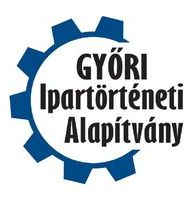Contact details
Foundation for Industrial History of Győr
Szent István út 10/a
Phone:
+3696520274
Fax: +3696520291
E-mail:
ipartortenet@ipartortenet.hu
Map
Lauer cottage
Richárd Lauer (July 24, 1871 - February 9, 1944) mechanical engineer, company director
Richárd Lauer was born on July 24, 1871 in Vienna. He continued his primary and secondary education in his hometown, and then obtained a degree in mechanical engineering from the technical university there. He began his engineering practice at the E. Škoda machine factory in Pilsen, where he worked in the steam engine, mining and smelting plant department.
Later, as an independent drafting engineer, he moved to the cannon factory of the Škoda works, where he quickly rose through the ranks: chief engineer, department head, group head and finally deputy director. He spent 28 years at the Škoda works, among other things, participating in the design of individual plants and sites. The Hungarian state and the Škoda works decided to establish the Hungarian cannon factory in 1913. Richárd Lauer was appointed general manager of the new company. He participated in the design, commissioning and management of the factory from the beginning. His wife, Škoda Hermina, moved to the city in 1915. During his leadership, the Artillery Factory became one of the best organized and most modern factories in the country. His social sensitivity and care are indicated by the fact that he had a residential complex built nearby for officials and workers. The factory he managed had spacious changing rooms and washrooms available to the workers, and there was an exemplary canteen. During and after World War I, he regularly helped those in need with donations and subsidies.
As a result of the collapse of World War I, the Artillery Factory was paralyzed, and the number of workers decreased significantly. In 1919, the occupying Romanian troops completely dismantled the factory, and the equipment was then transported to Romania. The Artillery Factory, which changed its name to Győri Ipartelepek Rt., bought out the Škoda shares in 1921 and became 100% owned by the Hungarian state. Richárd Lauer became the founder and director of the joint-stock company. The modern electric power plant built on the site of the Cannon Factory produced electricity much more economically, not only for the city, but also for the surrounding area.
Richárd Lauer also played a decisive role in establishing the religious life in Gyárváros. During the collapse of World War II, it was unthinkable to build a church and a chaplain's residence. At the same time, the artillery general manager helped organize the religious life of the growing part of the city: he let a barracks, which was a hospital for Bosnian soldiers stationed here during the war years next to Budai út, be given over to its intended purpose by Bishop Antal Fetser on December 8, 1919. Later, his donation of land contributed to the construction of the Sacred Heart Parish Church in Gyárváros. It was at his insistence that architect Aladár Árkay was commissioned to design the church. Richárd Lauer's stipulation was that the style of the church should adapt to the modern features of the environment. According to Árkay's plans, Győr architect Vince Schiel built Hungary's first modern church in Gyárváros, which was also significant from an artistic point of view. He also regularly donated to the goals of the Gyárváros parish. His commitment to Gyárváros is also shown by the fact that he was the founder and president of the Gyárváros Society. He was also a founding member of the Kisfaludy Literary Circle.
Lauer Richárd died on February 9, 1944, his last residence was at Wennes Jenő Street 6 in Győr. He is buried in the crypt of the St. Imre Church. His activity and social role were recognized several times during his life: in 1917 he was awarded the Middle Cross of the Order of Franz Joseph, and in 1937 the governor bestowed upon him the title of Chief Government Counselor.
Barber Tamas
References:
Vince Bedy: The past of the Catholic religious life of Győr. Győr, 1939. János Honvári
Biographical Lexicon
: A sketchy history of Győr between the two world wars. In. The history of Győr from the beginning to the present. Studies – City Archives Bulletins. Győr, 1997. 109-124.
Győri Nemzeti Hírlap. Volume 2, Issue 74. April 3, 1937.
Győr szab. kir. city and Győr-Moson-Pozsony kee county heads. Edited by József Palatinus and Imre Halász. Győr, 1931.
Ipartortenet.hu
The picture comes from the 1931 volume entitled Győr szab. kir. city and Győr-Moson-Pozsony kee county heads.


Back to the previous page!

